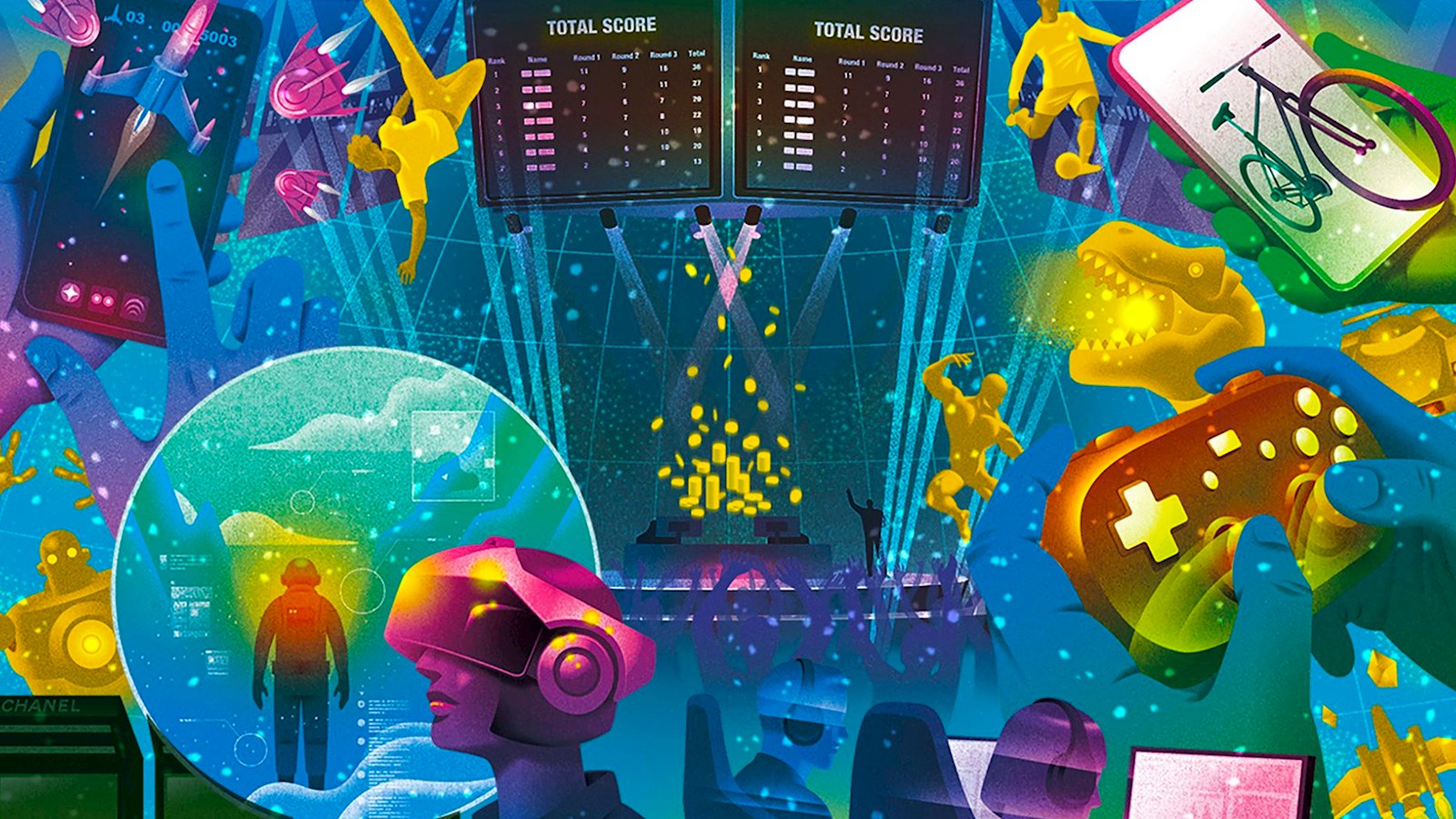
Illustration: Kouzou Sakai
Marketing’s missing link: the opportunity in gaming
The world of video games allows brands to engage with the next generation of consumers
Over the last year, the gaming industry has seen a welcome increase in the level of conversation about the advertising opportunities it offers. The vast majority of this chatter has been focused on gaming’s live, competitive arm – esports. More recently, this narrative has broadened slightly to highlight the continued growth (in both player base and placement in pop culture) of mass online multi-player survival game, Fortnite.
Esports and games like Fortnite offer brands a new way to engage with a generation of consumers who do not follow the same media consumption patterns as their parents and grandparents. But in casting esports and Fortnite as the face of the global gaming industry, we risk missing the much wider world of marketing opportunity presented by the gaming world. Gamers are not simply a niche sub-category of today’s youth. They are everyone from Minecrafting mums to Far Cry-ing fathers, Spore-ing sisters to Borderland-bashing brothers. It is multi-generational and multi-cultural.
Gaming exists at a crossroads of media, content and experience that marketers have long been cautious about approaching. Yes, game development timelines are lengthy and many gaming experiences have historically been too linear to allow brands a convenient, effective pathway into the experience. But a range of technological and social shifts is opening up the $140 billion industry.
An opening for brands
Historically, gaming was a closed-loop system restricted by hardware limitations that created a fragmented and heavily commoditised ecosystem in which game publishers held all the power and were happy to place a premium on top-quality gaming content. As fast internet connectivity has become more widespread, gaming experiences have shifted from linear solo play to co-operative or multi-person play. Now, the world’s most popular gaming titles are becoming hardware- and device-agnostic – they are played online, for free, as part of a massive community of passionate gamers all around the world.
The shifts happening in the technology and gaming world – 5G WiFi, cloud computing, AI – will open up gaming to an even wider global audience as it becomes easier, cheaper and more convenient to play games, with friends, on any device. The popularity of video games (there are estimated to be 2.5 billion gamers around the world) along with their value to the next billion people to come online over the coming decade, mean that there is now commercial imperative for the world’s biggest technology companies to invest in the industry and find ways to make it more appealing to the world’s biggest consumer brands.
As Microsoft, Amazon, Google, Apple, Tencent and Alibaba consolidate their positions in the industry – launching cloud gaming platforms, developing or buying the best content, building digital communities – we are likely to see a rapid improvement in the quality of advertising services on offer. Brands and marketing service firms need to invest the time and resources necessary to thoroughly understand the market, not just esports, but across the entire spectrum: from Candy Crush to Clash Royale; NieR:Automata to NBA2K; and Dreams to Dota 2.
Diverse audiences
Contrary to popular (mis)conception, gamers and gaming culture are not homogenous. The audiences, communities and ecosystems around major titles are as different as you would expect between fans of soccer and skiing.
A recent study by UK innovation foundation Nesta found that the typical gamer in the UK was just as likely to be female as male; was 43 years old; and just as well (if not more highly) educated and equally as wealthy as those who don’t play video games. In fact, gamers were found to consume more non-gaming culture (visiting museums, visiting cinema, partaking in photography or art) than non-gamers and were considerably more creative (more likely to write stories or poetry or create forms of digital art). The popular image of gamers as reclusive young men requires a radical rethink.
A little less than one-third of the world’s population are “gamers”, whether they self-identify as such or not. The cultural, technological and social legacy of video games has permeated throughout society and into mass culture. Film, literature and music now have a co-dependent relationship with the gaming world. Games like Minecraft and Portal help educate students about creative thinking, design and physics. Social and news media rely on the semiotics and compulsion loop mechanisms created by video games.
This symbiotic relationship will only intensify as tomorrow’s gaming – freed from the constraints of WiFi latency and differential hardware – continues to become a more social experience. Indeed, certain video games now more closely resemble gamified social networks than traditional computer game titles of the type that many Fortune 500 CEOs would recognise. Platforms like Fortnite have successfully built a global community by leveraging pop culture, celebrity influencers and a constantly evolving gaming experience to create a community that is not only highly engaged but open to brand partnership where it creates new value. And beyond the industry’s crown jewel, there is a world of vibrant, creative gaming communities that offer a range of potent marketing opportunities to brands willing to ditch their preconceptions and immerse themselves in a new world.
The power of Dreams
Dreams, for example, is a game-creation platform that gives players the power to create their own games through a combination of graphics design, video game logic, 3D sculptures, music and art. It empowers gamers to create what they want to play and share it with the world. This opens up a world of intriguing possibilities for brands that care about helping to create new experiences for their consumers. Minecraft, Roblox and Terraria are other open-world creation-driven sandbox games that are brand-friendly, family-friendly and education-orientated.
Gaming is also likely to be a key pillar of new models for how brands engage with the world’s next generation of consumers. Of the 700 million people who will come online in developing countries over the next seven years, nearly all will be part of a new leisure economy that prioritises entertainment over business. Mobile internet usage in the world’s newest growth markets will be driven by video, messaging and gaming rather than email, news and business. Brands will require new strategies for how to commercialise an audience that will have less disposable income but nearly unlimited mobile internet data.
Gaming can be a starting point for tackling this kind of challenge and many others faced by modern brands. There is a significant amount of education required about the overall gaming landscape, its cultures, media platforms, technologies and audiences. Increased attention on a small number of sub-sections within gaming is welcome, but it shouldn’t blind advertising professionals and marketers to the wider opportunity. Relative to the film, TV and music industries, gaming is vastly underinvested in as an advertising platform. That is a huge opportunity for the brands brave enough to broaden their horizons and embrace a new kind of partnership.
published on
27 November 2019
Category
More in Technology & data

WPP puts itself at the heart of collaborative 3D worlds
Pixar's 3D animation file format – USD – is the invisible building block of our digital 3D future.

A clarion call for AI, accessibility & advertising
Innovating at the intersection of AI, accessibility, and advertising

AI and health: a delicate balance
Healthcare marketing is in a category of its own and there’s a delicate balance to be struck between AI and human connection

